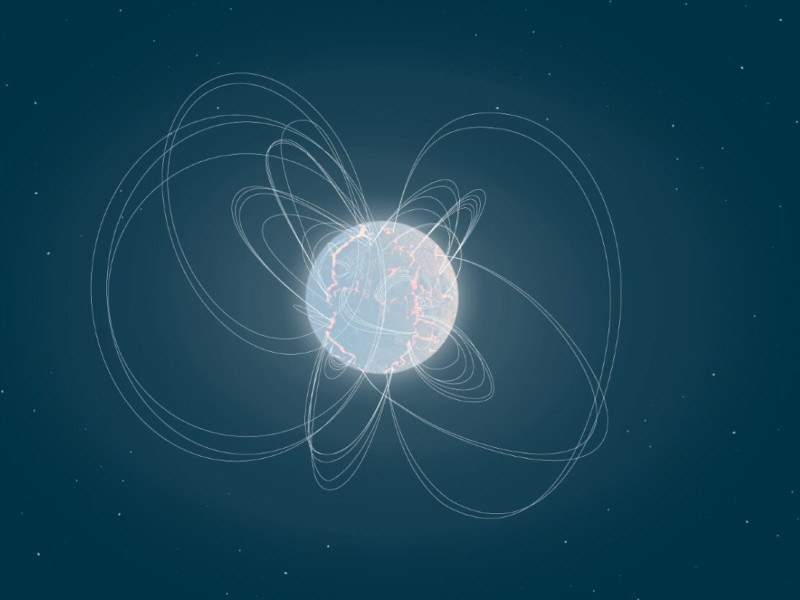
The researchers claim this is the first time a flash like this has been spotted outside of the Milky Way and could help researchers learn more about these sudden ‘giant flares’.
Researchers believe they saw the flashing light of a young neutron star inside a densely packed galaxy that is full of activity.
The European Space Agency’s (ESA) Integral space observatory spotted a sudden explosion last year from M82 – a ‘starburst galaxy’ that is undergoing an extremely high rate of star formation. This explosion lasted for only a tenth of a second, but no afterglow was detected from later observations.
Further investigation has led a team to believe that the burst was an extra-galactic flare from a magnetar, a young neutron star that has an exceptionally strong magnetic field.
Dr Sandro Mereghetti, the lead author on a paper discussing this discovery, said the team immediately realised the sudden explosion was a “special alert”.
“Gamma-ray bursts come from far away and anywhere in the sky, but this burst came from a bright nearby galaxy,” Mereghetti said.
Follow-up observations detected only “hot gas and stars” in the galaxy, removing the possibility that the blast came from a short gamma-ray burst. This makes the researchers believe the source of the event must be a magnetar.
Hard to spot events
These are a type of neutron star that are the very compact remnants of a massive star that have the mass of the sun packed into a small sphere. The researchers said neutron stars rotate quickly and have strong magnetic fields.
“Some young neutron stars have extra strong magnetic fields, more than 10,000 times that of typical neutron stars,” said ESA research fellow Dr Ashley Chrimes. “These are called magnetars. They emit energy away in flares, and occasionally these flares are gigantic.”
These giant flares are very rare to observe however, as the researchers claim only three giant flares have been seen from magnetars in our galaxy in the past 50 years of gamma-ray observations.
“The flare detected by Integral is the first confirmation of a magnetar outside of the Milky Way,” Mereghetti said. “We suspect that some of the other ‘short gamma-ray bursts’ Integral and other satellites have revealed are also giant flares from magnetars.”
The team believes this discovery opens up the search for other magnetars outside of our galaxy, which could help researchers learn how often these flares occur.
Find out how emerging tech trends are transforming tomorrow with our new podcast, Future Human: The Series. Listen now on Spotifyon Apple or wherever you get your podcasts.